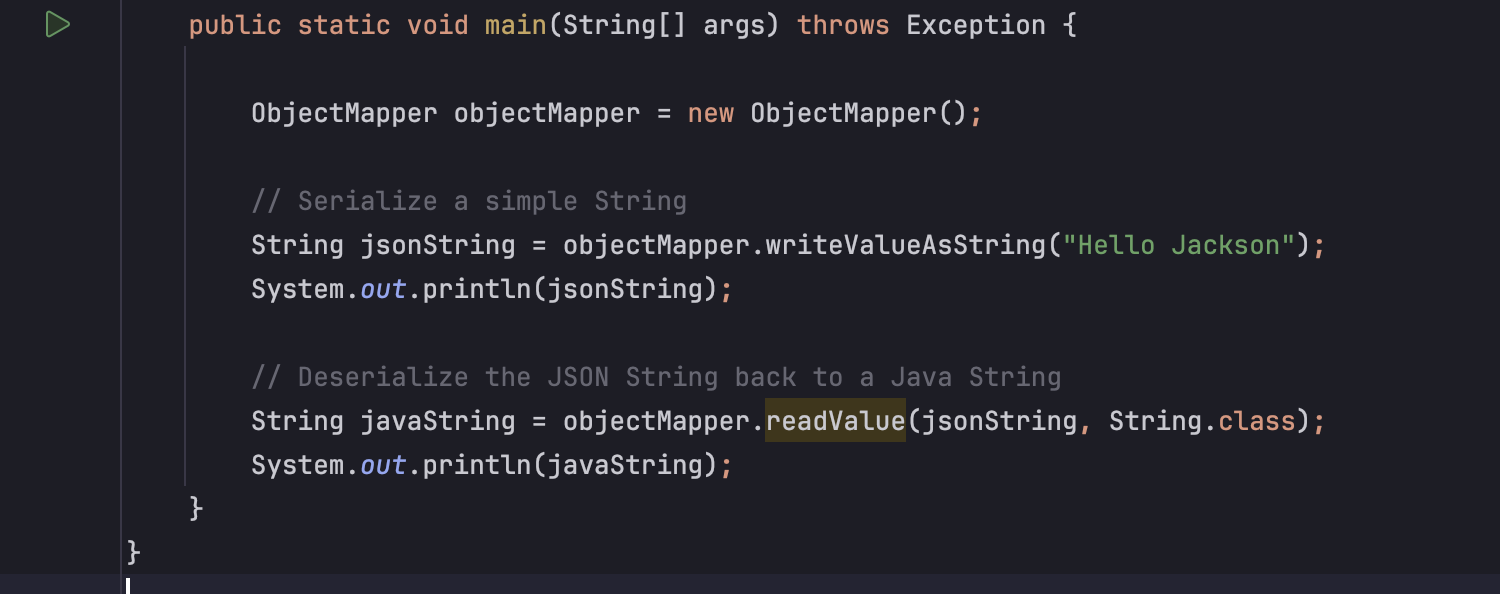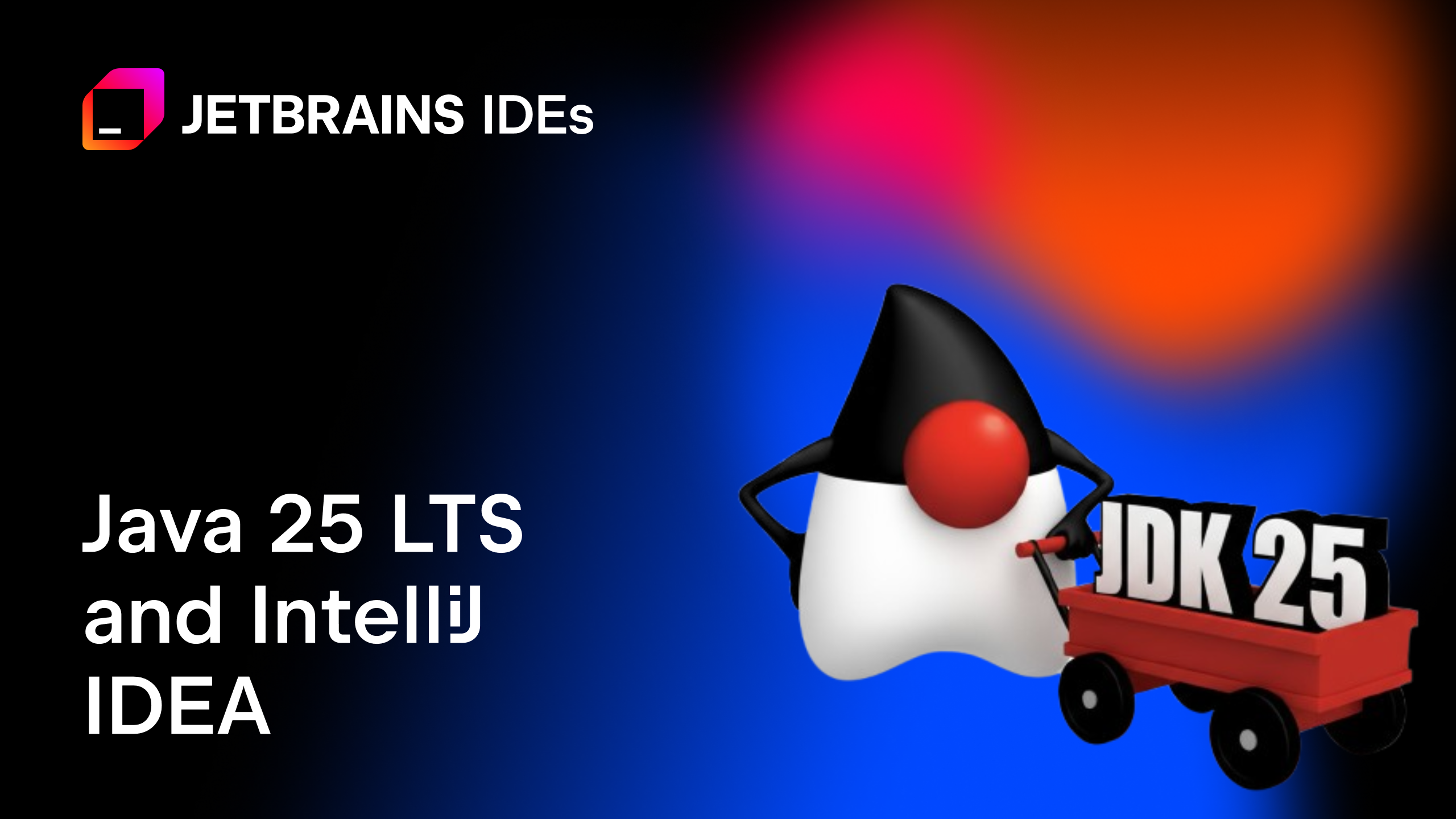IntelliJ IDEA
IntelliJ IDEA – the Leading IDE for Professional Development in Java and Kotlin
Java Frameworks You Must Know in 2024
Many developers trust Java worldwide because it is adaptable, secure, and versatile, making it perfect for developing various applications across multiple platforms. It also stands out for its readability and scalability.
What are frameworks? Why do you need them?
Since Java has a long history, there are plenty of frameworks and libraries to streamline your Java development process.
They provide pre-made chunks of code and a set of rules on how to build your app. This means you don’t have to start from zero every time you want to create something; you can use these tools to help you along, making it faster and easier to get your app working
In this article, we’ll look at the most popular, efficient, and trending Java frameworks that can help you level up your code.
Spring Framework and Spring Boot
Since the early 2000s, Spring has evolved alongside Java to provide efficient tools for building Java applications for projects ranging from small-scale web apps to large, complex systems. Spring is not just a framework. It’s an entire ecosystem of supporting frameworks and tools that cover almost all aspects of application development and ensure your application can be developed, tested, and scaled efficiently.
Where to Use Spring
You can use Spring in various areas, including web and enterprise development, microservices, data management, cloud-based applications, big data processing, automation, and testing.
Cool Features
Here is a list of the most powerful capabilities that Spring has to offer
Dependency Injection. Spring lets you inject dependencies either through constructors or setters, making your code neater and more organized.
Spring MVC: This is a popular Java framework used for building web applications. It follows the Model-View-Controller (MVC) architectural pattern that separates the application into three main parts: model, view, and controller.
Spring Boot: This is a sub-project of Spring that allows you to create stand-alone, ready-for-production Spring applications with minimal setup and configuration.
Transaction Management: Spring gives you a consistent way to manage transactions across different APIs like JTA, JDBC, Hibernate, JPA, and JDO.
Spring Data: This makes building applications with Spring and data access technologies more efficient.
Spring Security: A powerful framework that provides strong and customizable security measures for your Spring applications, including authentication and access control.
Testing Support: Spring offers great tools for unit and integration testing, including libraries like JUnit, Mockito, and more.
IntelliJ IDEA provides full Spring support. IntelliJ IDEA has Spring Initializr integration which allows you to create a new Spring project in just a few clicks right from the Welcome screen. What’s more, our IDE provides advanced coding assistance for Spring, including navigation, validating configurations, displaying autowired beans, etc.
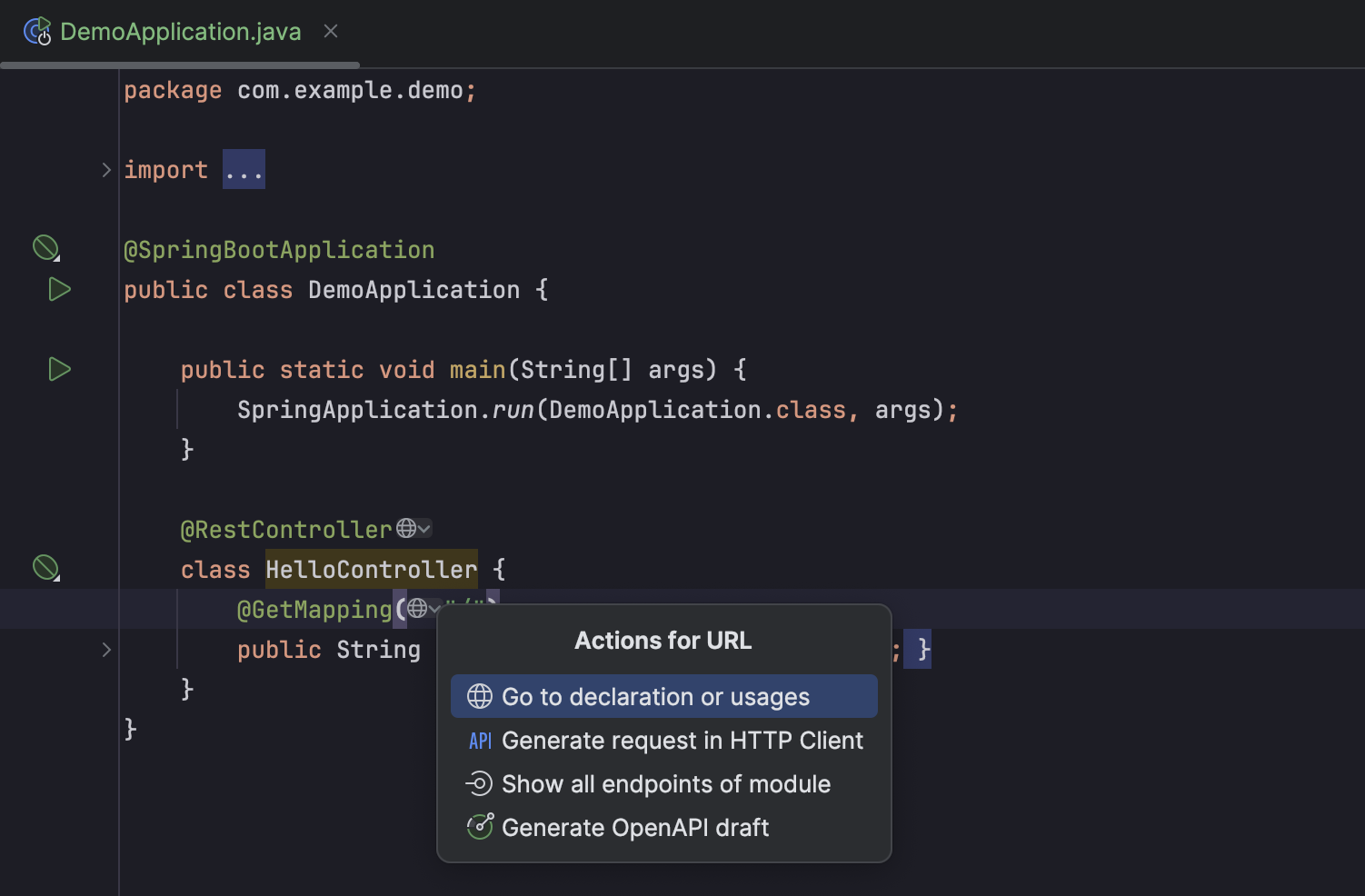
First Steps
- Getting Started
- Creating a Spring Boot “Hello World” Application with IntelliJ IDEA
- Build a Spring Boot App with AI Assistant
Micronaut
Micronaut is a JVM-based framework used for developing microservices or serverless applications. It’s designed to provide the tools and infrastructure for building scalable, high-performance applications with minimal memory footprint and startup time. The framework supports the Java, Kotlin, and Groovy languages. Micronaut shares some similarities with frameworks like Spring, yet it stands out for its unique features.
Where to Use Micronaut
It is excellent for developing microservice-based applications and is also useful in cloud environments like Docker and Kubernetes.
Cool Features
Dependency injection happens at compile time instead of runtime, as in most frameworks. This method, unlike the traditional use of reflection and proxies, allows you to start the application faster and reduce memory usage.
Reactive programming support supports reactive programming models, making it easier to handle asynchronous data flows and concurrency.
Extensive integration provides seamless integration with a variety of databases, cloud services, and other tools, offering flexibility in application development.
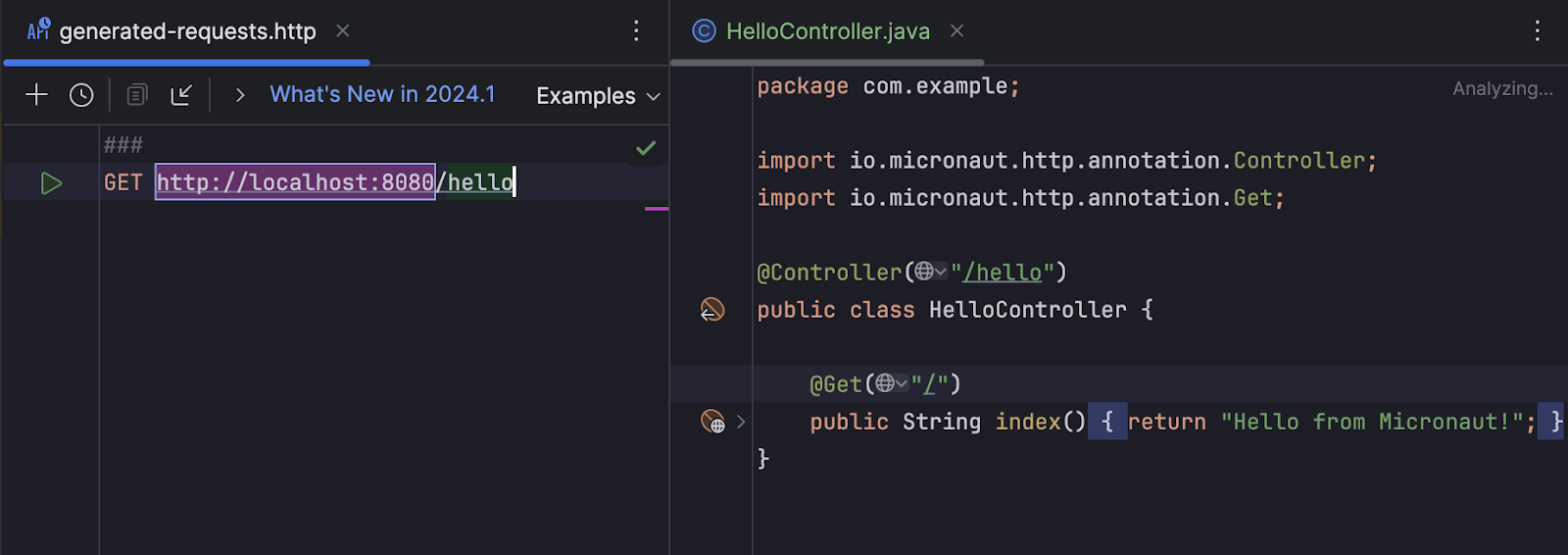
First Steps
- Quick Start
- Creating your first Micronaut application
- Developing Micronaut Applications with IntelliJ IDEA
- Introduction to Micronaut
Hibernate
Hibernate is an open-source Object-Relational Mapping (ORM) framework for Java applications. It’s designed to simplify the development of data-driven applications. Hibernate has its own language, Hibernate Query Language (HQL), which uses objects instead of table names. Thanks to HQL, Hibernate can significantly reduce development time, make your code less error-prone, and easier to understand and maintain than raw SQL.
Where to Use Hibernate
Hibernate can be used in any Java application that interacts with a relational database.
Cool Features
Lazy Loading: Your data is retrieved only when called, saving memory and improving performance.
Cache Mechanism: This mechanism allows frequently used data to be stored in memory, which reduces database load and speeds up data retrieval in your application.
Reduced Boilerplate Code: With Hibernate, you don’t have to write tedious JDBC code for CRUD (create, read, update, delete) operations. It manages the database operations in the background, thus reducing your development time.
IntelliJ IDEA offers coding assistance for Hibernate, such as autocompletion for HQL queries, handy inspections and quick-fixes, and the Hibernate console that allows you to run your HQL queries straight from the IDE.
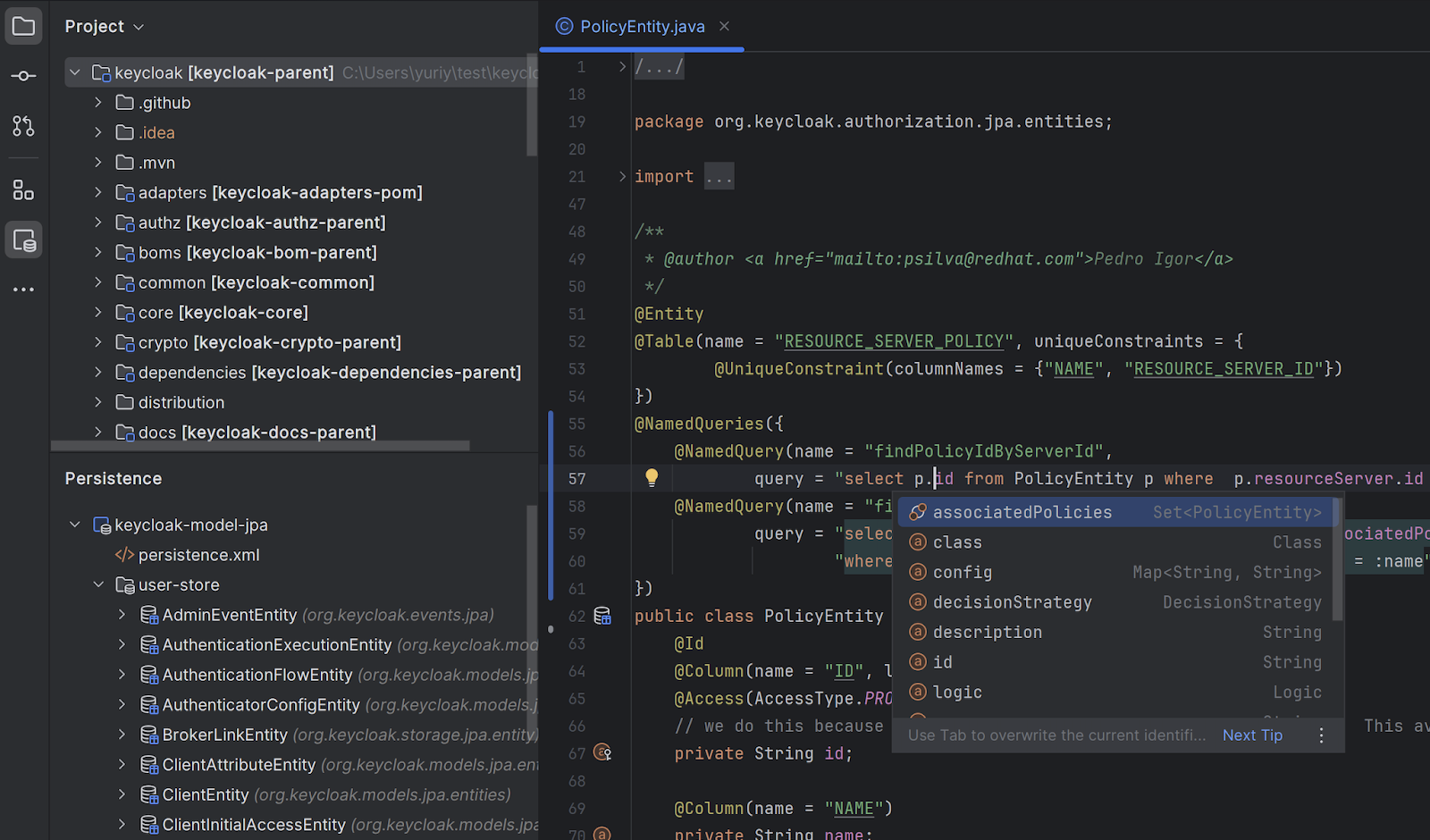
First Steps
- Hibernate
- Hibernate Tutorial
- IntelliJ IDEA. Working with Hibernate/JPA
- Hibernate Tutorial For Beginners
Apache Kafka
While not a framework, Apache Kafka is an essential open-source stream processing platform for handling large amounts of data in real time. We consider it to be a very helpful asset for Java developers as it can scale up effortlessly without any downtime, making it great for managing big data projects.
Combining the various Kafka APIs for publishing or subscribing to one or more Kafka topics and the Kafka Streams API to implement stream processing gives you a good foundation for building scalable, decoupled applications.
Where to Use Kafka
Kafka is great for handling live data and constantly updating applications. It’s used on websites to track what users are doing and also in systems that need to share data between different parts.
Cool Features
Decoupling: Apache Kafka helps systems and data streams work independently and asynchronously. This can be explained through basic terms. Kafka uses topics to organize data streams. Producers send messages to the topics without needing to know who will consume them and don’t wait for a consumer to be available. Consumers subscribe to topics and handle messages at their own speed without blocking the producer if it’s processing messages slowly.
Fault tolerance in Apache Kafka means that even if something goes wrong, like a server crashing, Kafka can keep running without losing data. It does this by making copies of data and automatically switching to backups if needed.
Integration with other systems: Kafka can integrate with a wide range of systems, including databases, file systems, stream processing frameworks, etc.
IntelliJ IDEA offers the Kafka plugin, which allows you to monitor your Kafka event streaming, make consumers, producers, and topics, and connect to Schema Registry to create and update schemas.
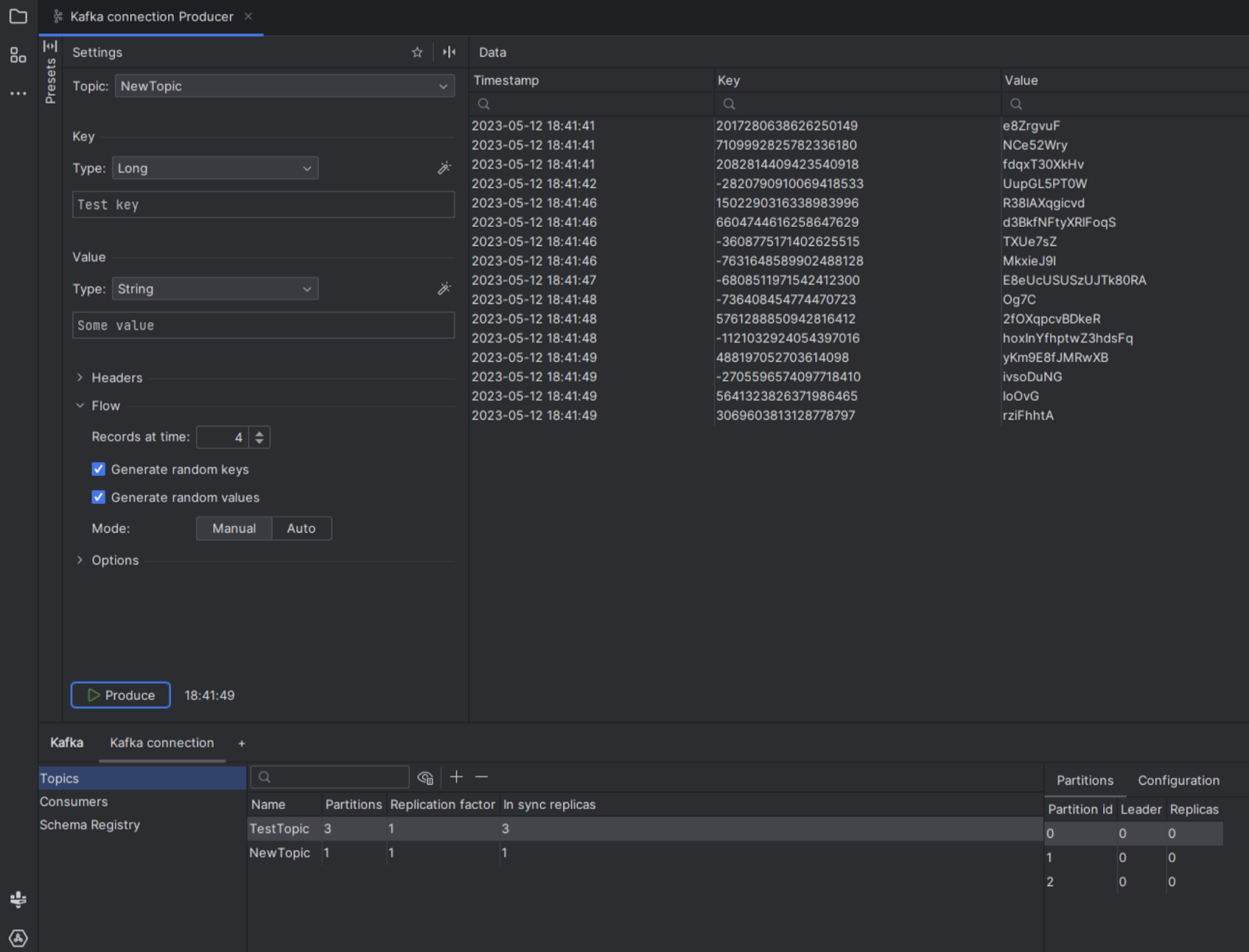
First Steps
JUnit 5
JUnit 5 is a popular Java framework used for writing and running automated tests to check if your code is working as expected. JUnit 5 helps keep your code neat and readable, find and fix errors, boost software quality, and improve testing efficiency.
Where to Use JUnit 5
JUnit is predominantly used for unit testing of individual units of Java code (like methods or classes) in isolation from the rest of the application.
Cool Features
Annotations. JUnit 5 annotations serve as special markers in Java code, offering
instructions to the JUnit 5 framework on test execution. For instance, @Test marks a method as a test method, while @Disabled skips the annotated test method during execution. @DisplayName allows you to write a display name for your test in a normal sentence.
Assertions are the methods that verify that your code behaves as expected.
Test runners are special programs that allow you to run tests and see the results, telling you which tests passed or failed.
Test suites: This feature lets you group several tests and run them together.
Parameterized tests allow you to run the same test multiple times with different sets of parameters, making sure the functionality works for different inputs.
Nested tests: The @Nested annotation in JUnit 5 allows you to group several test methods within nested classes inside a main test class, helping to organize tests more clearly and adding expressiveness to your tests, making them easier to read and understand.
IntelliJ IDEA is fully integrated with the JUnit framework. To create a test for a specific class, you can simply right-click on it, select Create test, and choose JUnit 5 as a desired testing library. Running tests is also straightforward and easily accessible from the UI. It’s that simple!
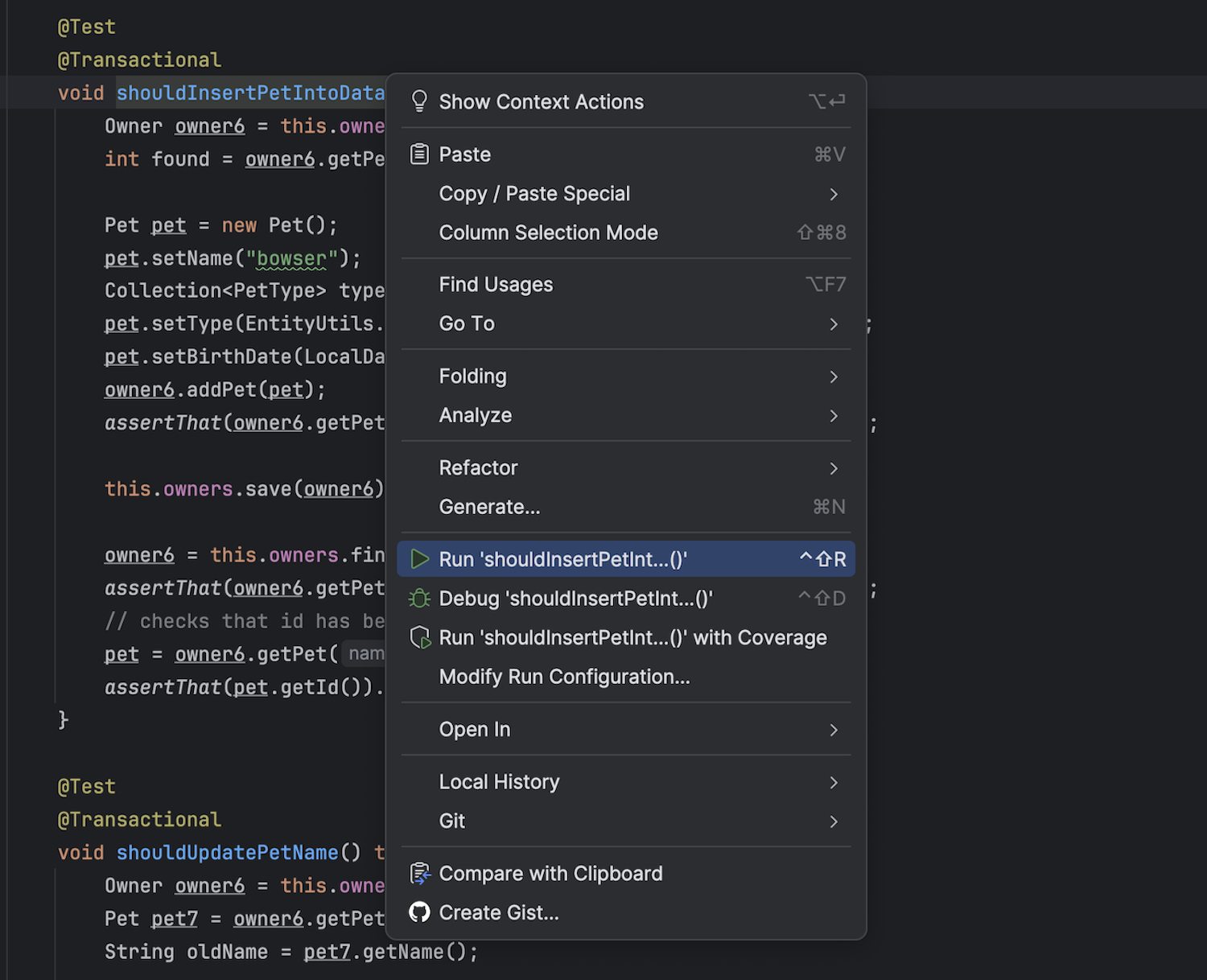
First Steps
- JUnit 5 documentation
- A Guide to JUnit 5
- Java Unit Testing with JUnit – Tutorial – How to Create And Use Unit Tests
- IntelliJ IDEA. Writing Tests with JUnit 5
- JUnit 5
Mockito
Mockito is a popular mocking framework for unit tests in Java. It allows you to create mock objects in automated unit tests that mimic the real objects in your tests. For instance, if your code needs to fetch data from a database, Mockito allows you to set up a mock database that returns the required test data, so you don’t have to use the actual database.
Where to Use Mockito
You can use Mockito in unit tests to isolate code units by mocking their dependencies.
Cool Features
Automated mock creation: You can create mocks with the @Mock annotation to reduce boilerplate code in your tests.
Spying allows you to use real objects in your tests, calling all their methods except the ones you choose to stub.
Methods stubbing: Stubs define how a mocked method should behave when invoked. For example, you can make a method return a specific value or throw an error when tested. This helps you check how your code works in different situations without using the actual methods.
ArgumentCaptor lets you capture and examine an argument passed to a method, which is very helpful when the argument isn’t accessible outside the method you’re testing.
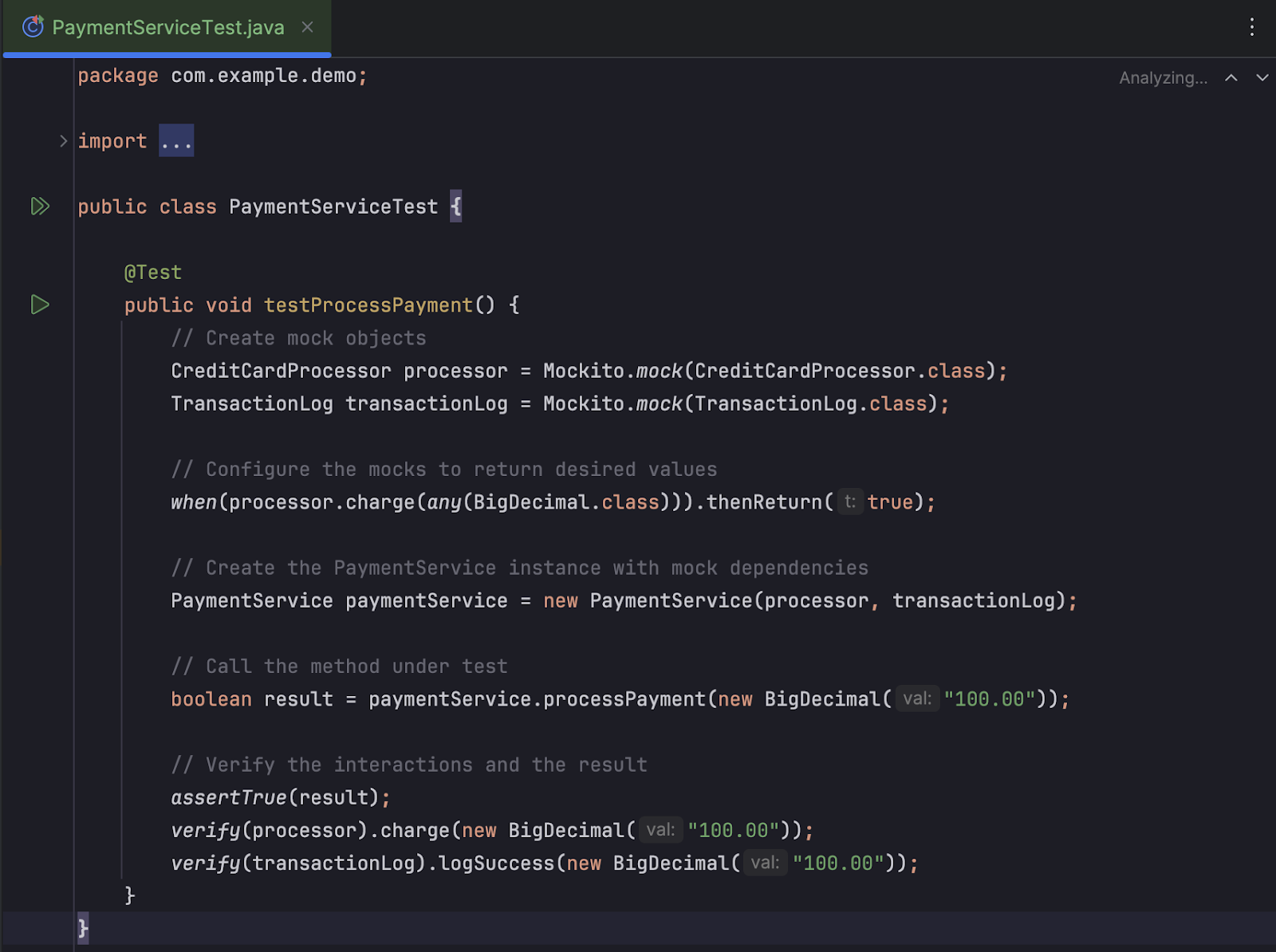
First Steps
- Mockito documentation
- Mockito website
- Mockito Tutorial
- Getting Started with Unit Testing in IntelliJ IDEA: JUnit and Mockito
- Mockito JUnit: Create Your First Code in Mockito
WireMock
WireMock is another framework that can help you create stubs and mocks. However, this time, the framework simulates HTTP-based APIs. It acts as a real web server that is capable of providing stubbed responses to a client’s requests.
Where to Use WireMock
Use WireMock when you want to test your application’s interaction with external HTTP services, during the development of a microservice that depends on other services, or to create detailed logs for debugging complex issues, without having to use those actual services.
Cool Features
Fault Simulation: WireMock allows you to simulate problems such as delays, connection resets, and random noise, mimicking an unreliable server or network.
Request Matching: It is possible to match incoming requests by URL, HTTP method, headers, and body content to determine the appropriate response.
Record and Playback: It is capable of recording requests to a real service and then playing them back, which is useful for creating mocks based on actual service behavior.
Starting from version 2024.1, IntelliJ IDEA comes with the WireMock plugin.
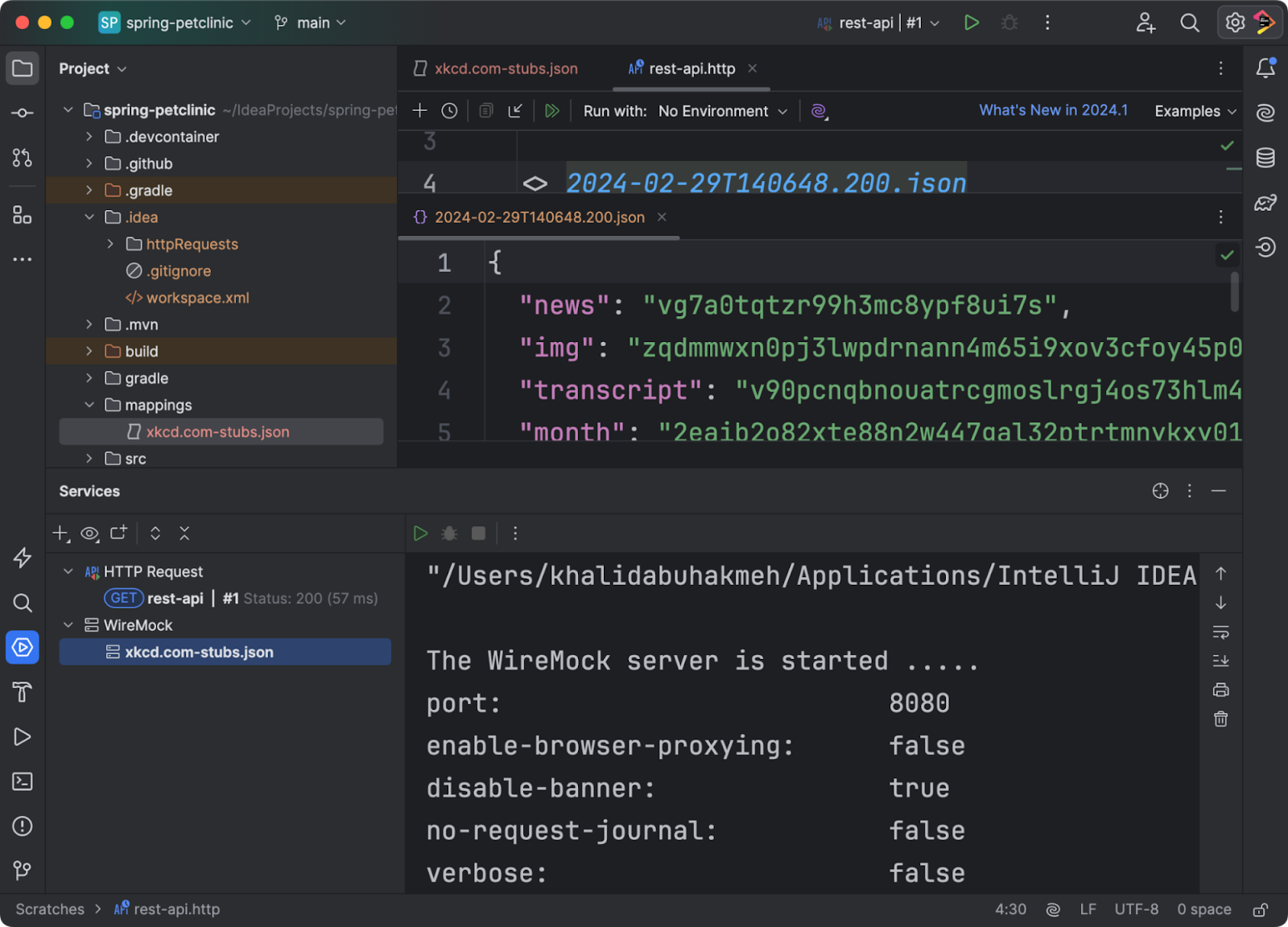
First Steps
Testcontainers
Testcontainers is another framework for testing your application. It focuses on integration testing, which checks how different parts of an application work together. It is designed for situations where you need to write integration tests with other services that should be running during your tests.
Where to Use Testcontainers
Testcontainers is ideal for integration tests and for testing the full flow of an application in an environment that imitates production setup.
Cool Features
Test isolation guarantees that your tests will not affect each other’s data.
Support for various technologies: Testcontainers supports databases like MySQL, Postgres, MongoDB, and others. It also works with Selenium browser environments for end-to-end tests, and message brokers like RabbitMQ, Kafka, etc.
Easy integration with JUnit allows you to effortlessly add tests that use containers to your current tests.
Automatic clean-up: Testcontainers removes everything it uses, like containers, volumes, or networks, after the tests are done. This keeps your testing space tidy and helps avoid resource leaks.
You can use Testcontainers in IntelliJ IDEA with your test framework of choice, for example with JUnit.
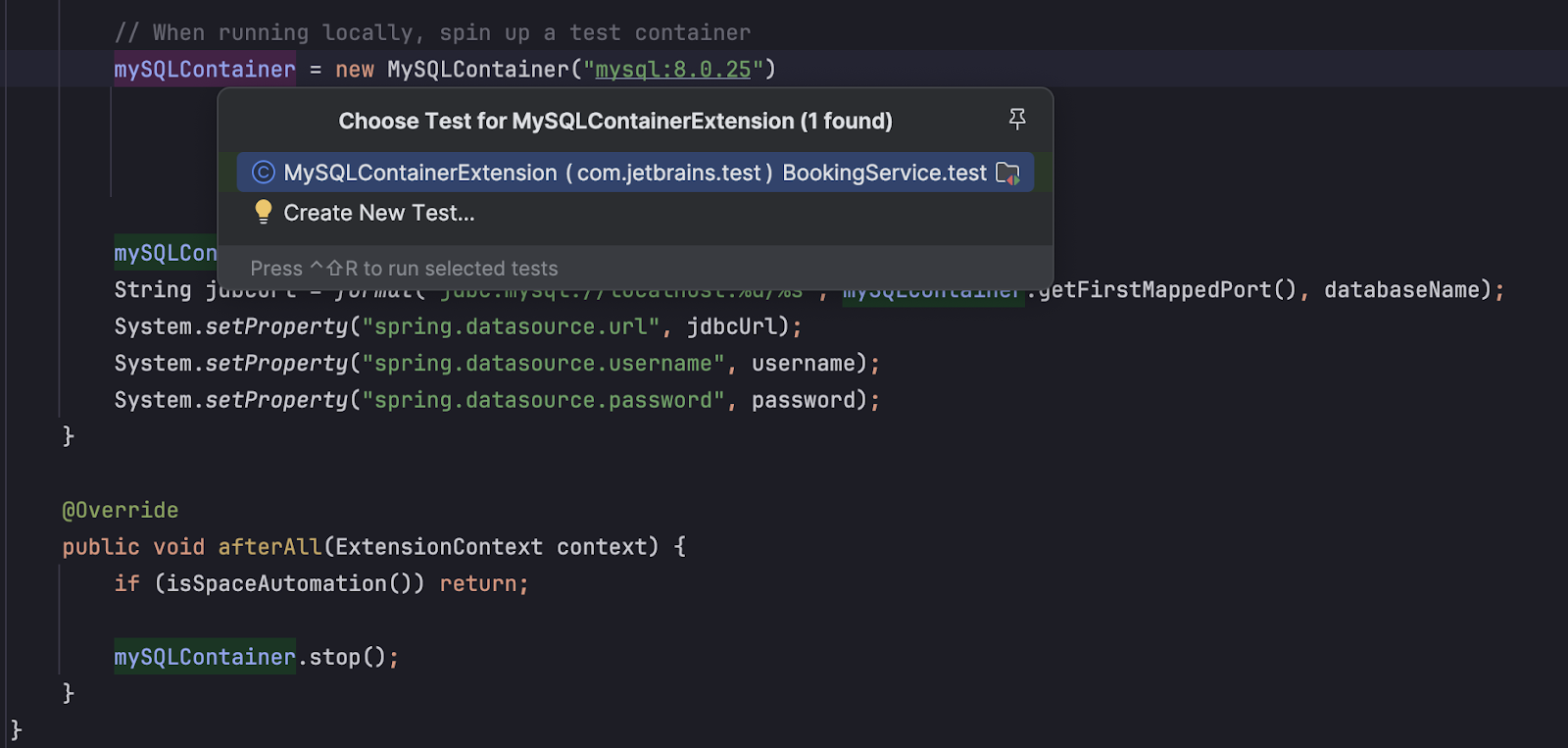
First Steps
- Getting Started Guides
- Testcontainers – From Zero to Hero
- Mastering Testcontainers for Better Integration Tests
Awaitility
Awaitility is a small open-source Java DSL library that simplifies testing asynchronous systems. This means that it lets the tests wait until an asynchronous operation finishes or a specific condition is met, which is very helpful for testing concurrent systems.
Where to Use Awaitility
Use Awaitility when writing tests that include asynchronous operations, such as:
- Ensuring actions are completed within a specific time frame.
- Testing web services or similar systems where responses can be delayed.
- Checking conditions in multithreaded or concurrent systems within a defined period.
Cool Features
Timeout: Awaitility allows you to set a timeout for a specific condition in a test. If the condition isn’t met within this time limit, it stops the test, preventing it from running forever.
Custom conditions: Beyond just using timeouts, you can create specific conditions for more flexible testing in various scenarios.
DSL Syntax: Offers an easy, explicit syntax for specifying conditions, making tests easier to understand and maintain.
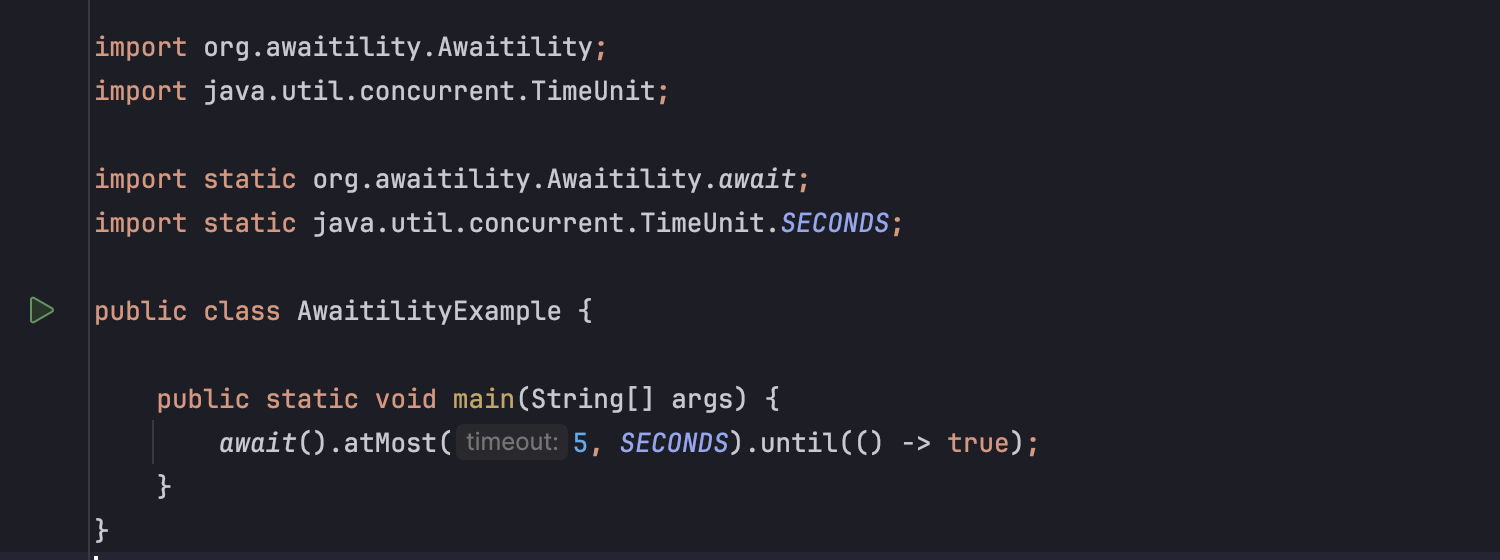
First Steps
Jackson
Jackson is a comprehensive library for reading, writing, and manipulating JSON data in Java applications. With its help, you can parse JSON to Java objects and serialize Java objects to JSON.
Where to Use Jackson
Jackson is highly versatile and can exchange data over RESTful APIs, persisting Java objects to JSON files, and processing external JSON data.
Cool Features
Java annotations support: Jackson allows developers to use Java annotations extensively, giving them significant control over the serialization and deserialization processes.
Streaming API: It offers a fast, efficient method to read and write JSON, which is ideal for handling large JSON files or data streams with minimal resource usage.
Support for various data formats: Jackson can work with various data formats such as JSON, XML, CSV, and YAML.
First Steps
That is it for today! We’ve introduced a variety of frameworks and tools for Java developers, including major ones like Spring and supportive technologies like Hibernate, PostgreSQL, Jackson, and Apache Kafka. Additionally, we’ve showcased testing frameworks and tools like JUnit, Testcontainers, Awaitility, Mockito, and WireMock to help you test your apps. Many Java applications, both small and large, will be built on top of one or several of these, so be sure to explore what they have to offer.
Subscribe to IntelliJ IDEA Blog updates


